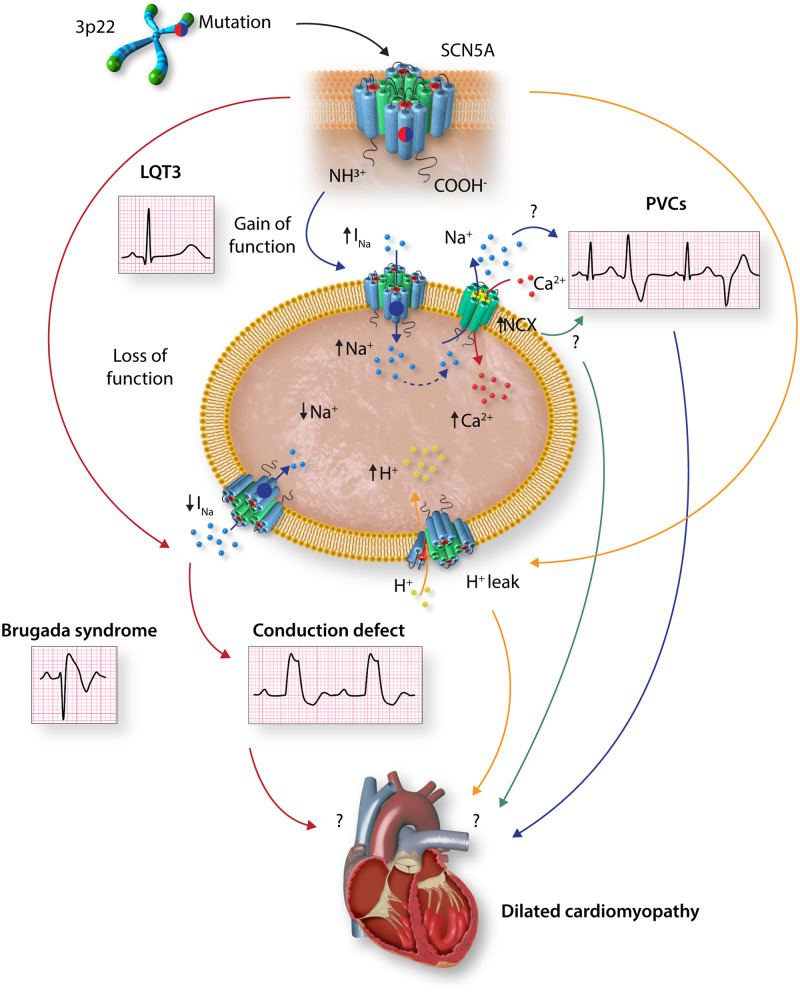Figure 4.
Graphic illustration of putative mechanisms underlying dilated cardiomyopathy associated with SCN5A mutations. Gain-of-function (GoF) SCN5A variants are known to cause long QT3 syndrome. GoF variants could also increase INa current and to frequent premature ventricular contractions or ventricular tachycardia, which might contribute to left ventricular dilatation and dysfunction. Likewise, GoF variants could induce compensatory activation of the Na+/Ca2+ exchange protein, resulting in intracellular Ca2+ overload and consequently impaired excitation–contraction coupling and contractile dysfunction. Loss-of-function SCN5A variants are known to cause Brugada syndrome and cardiac conduction defects, the latter could lead to cardiac structural remodelling. SCN5A pathogenic variants could also result in proton leak into the cytosol, acidify the cytosol, and myocardial dysfunction. Experimental data to support these hypotheses are scant. INa, inward depolarizing sodium current; NaV1.5, voltage-gated sodium channel α-subunit; NCX, Na+/Ca2+ exchanger; PVC, premature ventricular contractions.

